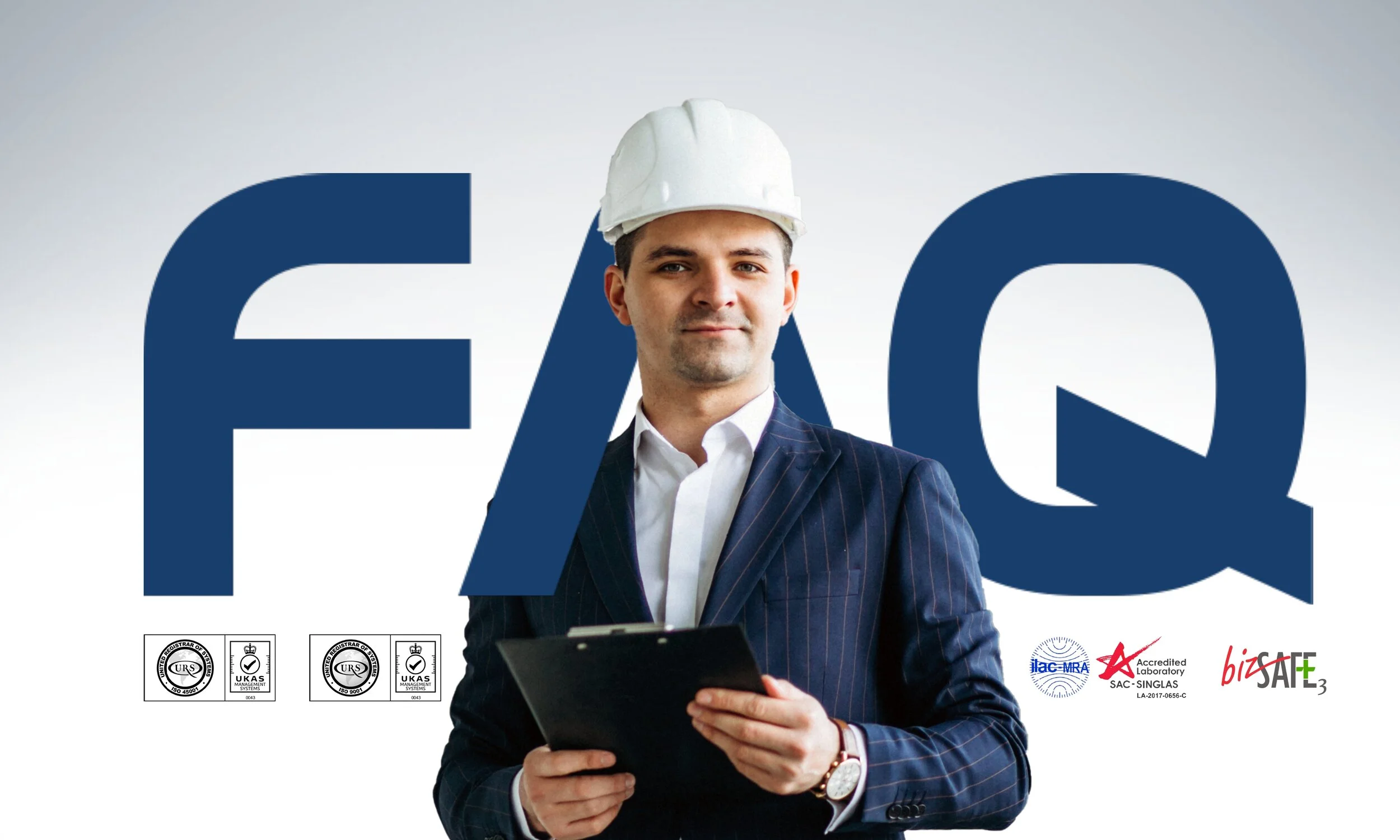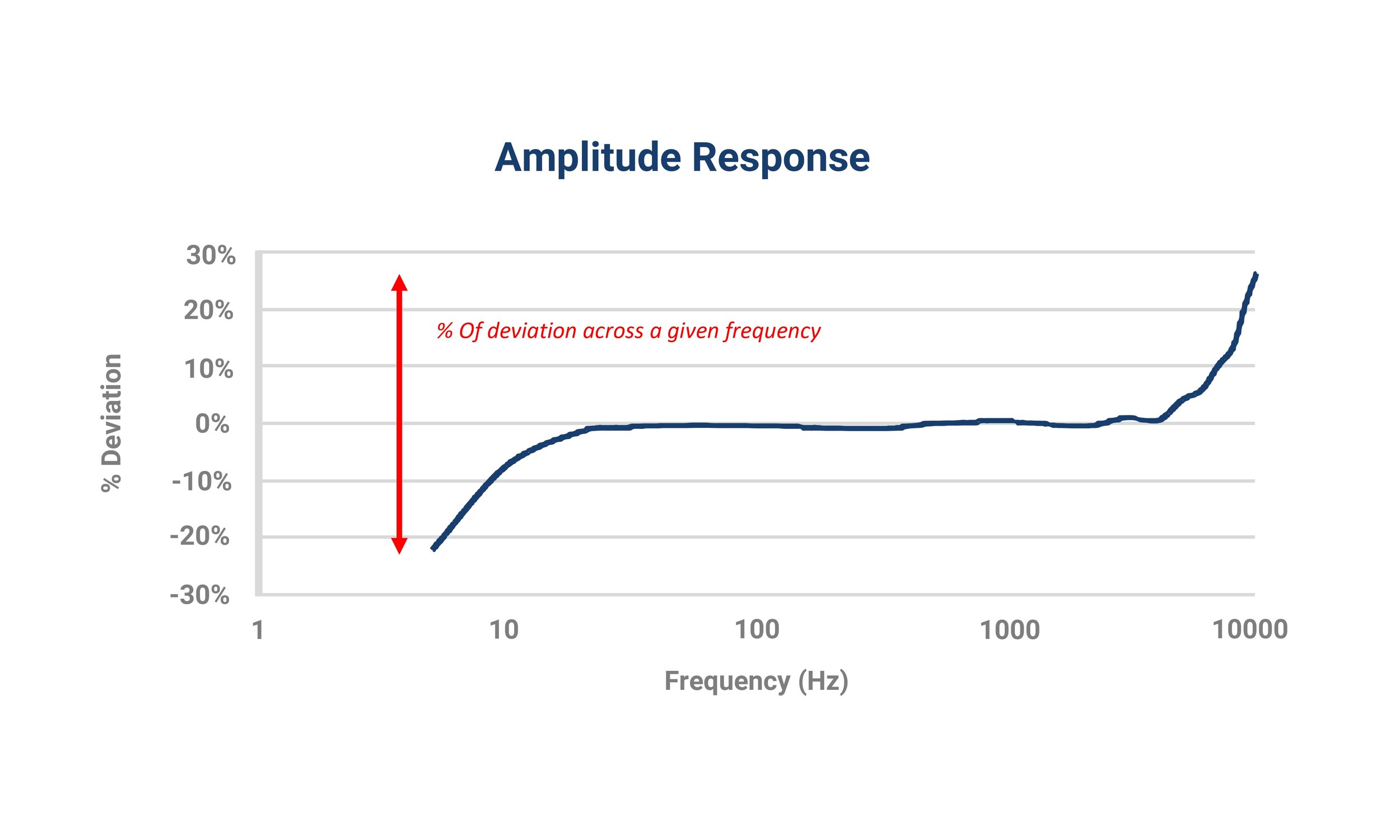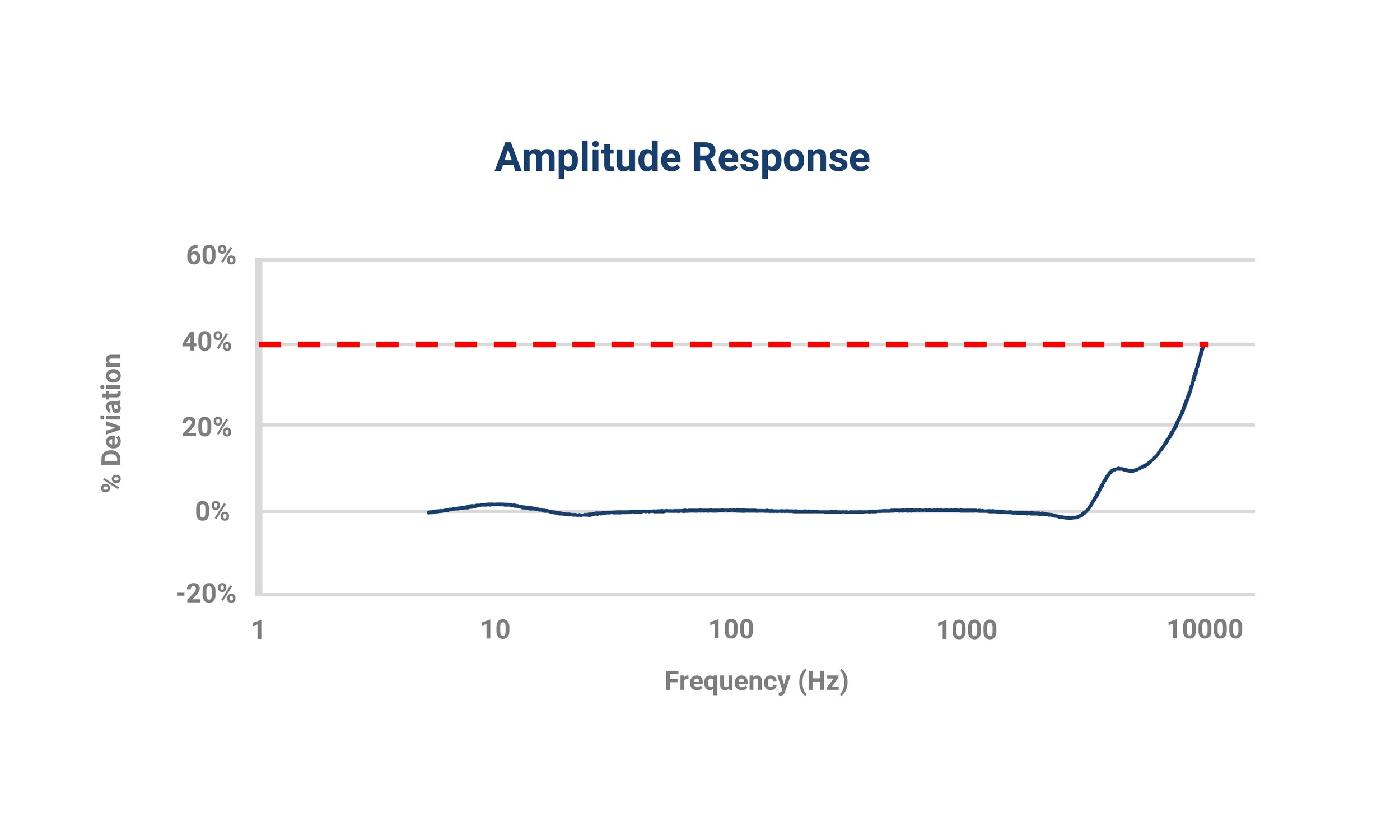Why do I need to calibrate the accelerometer?
Calibration is to identify the accelerometer’s frequency response. Overtime the sensitivity of the sensor may drift, resulting a change in response of the sensor, in turn affecting the test accuracy. From the calibration, the data provided in the certificate can be used to calculate the overall test uncertainty.
Graph 1 below shows an example of an accelerometer calibration with deviation peaking over 20% at frequency below 10Hz and above 9kHz. This information can be used to assess the accuracy of the sensor across a test frequency. If the acceptance value is below 15%, then the accelerometer has failed to meet the requirement.
Graph 1. Accelerometer response across a frequency range
How often do I need to calibrate the accelerometer?
Accelerometers, like other electrical equipment are to be calibrated yearly per ISO suggestion. This is to validate the sensor’s condition, and accuracy of data collected. Depending on the nature of the project, multiple calibration can be performed to validate measurement accuracy and reduce the test uncertainty value.
Graph 2 shows the amplitude response of an accelerometer calibration across a period of 1 year. One observation is the increase in deviation percentage. The user will have to evaluate if the increase is within tolerance and decide if the accelerometer is usable for the test.
How do I determine the calibration frequency range?
Suggested calibration frequency range should cover at least the test range. The calibration should allow user to understand the accelerometer frequency response within a given test range.
Example Graph 3 below has a test profile from 13Hz – 200Hz. The calibration should reflect the frequency response between 13Hz – 200Hz seen in Graph 4.
Is the ILAC MRA recognised by other global standards?
A system of international mutual recognition agreements collectively known as ‘Conformity assessment bodies’ (CABs) to achieve a form of international recognition. The ILAC Mutual Recognition Arrangement (MRA) is formed to develop a global network of accredited CABs that can be relied on to provide accurate results. Over 81,000 laboratories, 12,000 inspection bodies, 560 PT and 200 RMP are accredited world-wide under the ILAC MRA. The ILAC MRA, which came into effect on 31 January 2001, provides significant technical underpinning to international trade by promoting cross-border stakeholder confidence and acceptance of results from accredited CABs.
What documentation do I receive with each calibration?
You receive a certificate of calibration.
What is the lead time?
Generally, the lead time is 1 week from when we receive the items for calibration.
Are expedited services available?
Yes, expedited service is available for an additional fee. Contact us for further information.
How do I obtain a quotation for Calibration Services?
Do you loan, rent, or sell test equipment?
Yes, click here → to see our services and products.
Do I need to calibrate My vibration controller unit?
How can we help you?
Interested in our Testing & Calibration services? Send us your inquiry via the Testing & Calibration Lab Form and we will be pleased to help you.
Got a friend, client, or colleague who could use some of this information? Please share this article.










